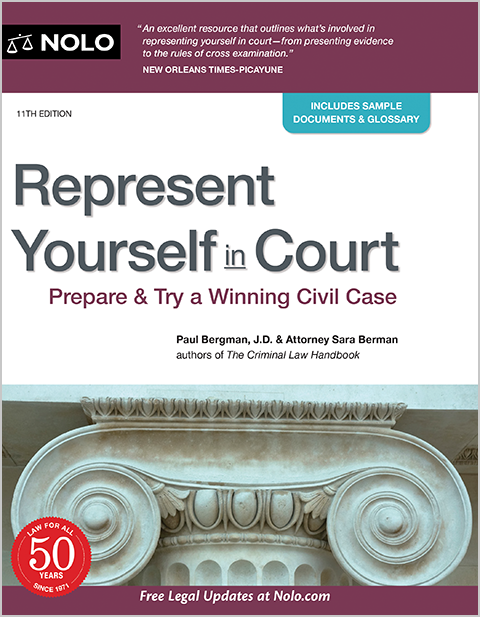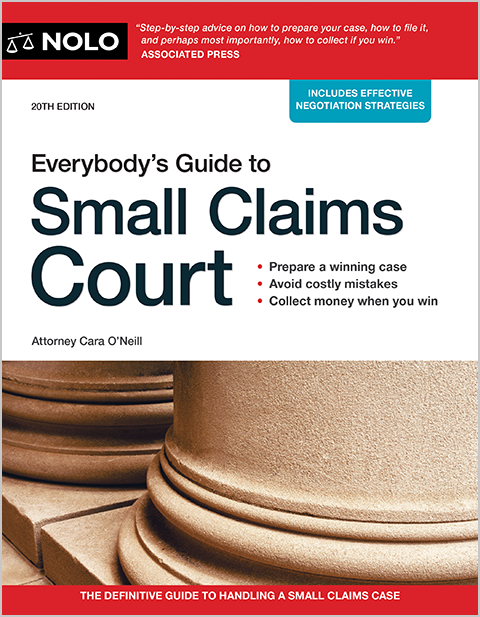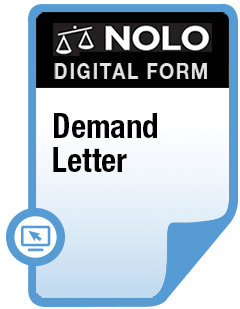You got a "Notice of Class Action Settlement." Find out what that means, why you got it, and what steps you should take to protect your rights.
You recently got something called a "Notice of Preliminary Class Action Settlement" or a "Notice of Class Action Settlement." It probably came by ordinary mail, though it also might have landed in your email inbox. What is this thing? Does it matter? And what, if anything, do you need to do?
In a nutshell, what you've received:
- is a notice that's required by applicable court rules.
- lets you know that a class action lawsuit in which you're interested has tentatively settled, and that you have specific legal rights, and
- probably doesn't require you to do anything, unless you're unhappy with the proposed settlement.
After a quick look at how you ended up in a class action, we'll explain the notice you received in more detail.
How Did I Get Into a Class Action Lawsuit?
First things first. Learn what a class action lawsuit is—if you don't already know—and find out how class actions generally work. Then we'll turn our attention to how you got here.
Why Am I in a Class Action Lawsuit?
So, how did you get here? The ways are practically endless. Here are some common examples.
- You bought a defective product. At some point, probably several years ago, you bought a product. Later on, it turned out that the product was defective and it injured lots of people, some of them quite badly. You might not have been injured yourself, but maybe you had to take the product back to the store for repairs or a recall. Or maybe you just gave up and tossed it in the trash.
- Banking and financial accounts. You have a bank-affiliated credit card. Federal regulators investigating the bank found out about some improper bank policies that caused tens of thousands of cardholders to be charged unlawful fees. Each individual charge is small—just a few dollars—so yours just flew under the radar, so to speak. But in the aggregate, the total charges add up to of tens or hundreds of millions of dollars.
- A data breach. You have a store account with a major national retailer. Because of lax data security practices, hackers got into the retailer's online network and stole confidential information—names and addresses, social security numbers, bank account information, passwords, and more. The bad guys then used this data to impersonate the retailer's customers and open fraudulent credit and charge accounts, causing huge losses. Even if you weren't a victim, your personal information is forever at risk.
These are among the most typical kinds of cases that end up being a class action. Notice the key characteristics. Hundreds, thousands, or tens of thousands of people were (or might have been) injured. All of their injuries arise from a common fact pattern. And, for the most part, their injuries or losses are very similar. That's practically the recipe for a class action lawsuit.
You Probably Got an Earlier Notice
It's up to the judge handling the case, taking into consideration the law and legal arguments made by the lawyers, to decide who gets included in the class (or classes—there can be more than one). The process of deciding whether there should be one or more classes, and if so, who should be included, can take many months.
Lots of proposed class actions never make it past this point, called the "class certification" stage. The judge issues a ruling that denies class action status and the case fizzles out and disappears.
The Notice of Class Action Lawsuit
In your case, though, the judge decided a class action was legally appropriate. You were made a "proposed" class member. Soon after that, you should have received a document (mailed, emailed, or both) called a Notice of Class Action Lawsuit. These notices can be easy to miss or ignore. Often, they're postcard-sized mailers with a bunch of tiny print that looks a lot like junk mail.
That notice told you about the case and let you know you were included as a proposed class member. It also told you that if you didn't want to be part of the class action—you weren't interested in suing, or you wanted instead to file your own, separate lawsuit—you could "opt out" of the class. You didn't opt out, so you became a class member.
How Did the Case Settle Without My Knowledge?
At this point you might be thinking: "Wait. If I'm a class member, how did the case settle? No one said anything to me." Fair point. Here's what's going on.
Start with the court rules. If your class action is in federal court, it's controlled by the Federal Rules of Civil Procedure. In particular, pay attention to Fed. R. Civ. Proc. 23 (2025) (Rule 23). It's the roadmap for all things related to federal class action lawsuits.
If yours is a state class action case, your state's rules of civil procedure will control. Most state rules are modeled after, or closely follow, the federal rules and Rule 23. But there can be important differences, so make sure to consult the proper state rule.
Under Rule 23, the judge will designate a few plaintiffs as "class representatives." Your state rule might call them "lead plaintiffs" or something else instead. Regardless of the title, their task is to represent all the other class members, including you. The class lawyers work with them to move the case along and, at the appropriate time, to negotiate a settlement.
Rule 23 doesn't require that class members be kept apprised of all day-to-day goings on. In a typical class action, most class members won't hear a word about settlement negotiations or a settlement until the terms of the deal are, as a practical matter, very nearly done.
Why Am I Getting a Notice of Class Action Settlement?
You've received a Notice of Class Action settlement because:
- the lawyers, after consulting with their clients, have agreed to a proposed settlement
- they've asked the court to consider and approve the settlement in order to make it final, and
- Rule 23 (or your analogous state rule) requires the court to send you a notice so you can—should you choose to—take steps to protect your legal rights.
At This Point, It's Just a Proposed Settlement
Understand, importantly, that at this point, any settlement is just a proposal. True, the parties have negotiated long and hard to get here. The terms of the proposal undoubtedly are long, comprehensive, and very detailed. Even so, it's just a proposed settlement that's not yet binding on anyone, including you.
The Judge Must Review and Approve the Settlement
Rule 23 or your state law counterpart says that no settlement can become final until the court reviews and approves it. The parties will hammer out the terms of their proposal, and they'll also cooperate to put together a court filing called something like a "Motion for Approval of Proposed Settlement," together with a lengthy brief or legal memo in support of that motion. The court will consider all of this information and will also hold a hearing to listen to arguments for and against approval.
To approve a proposed settlement, the court must conclude that it's "fair, reasonable, and adequate." The judge will consider specific factors, including these.
- Adequate representation. The court must find that the class representatives and their lawyers adequately represented the interests of the entire class. While the court will look for something more than mere lip service, this isn't a tough hurdle to clear.
- Arm's length negotiations. The terms of the deal must have been fairly agreed to in arm's length negotiations. This essentially means the parties and their lawyers bargained honestly and in good faith, with each side genuinely looking out for their own interests.
- Adequate relief. Unfortunately, there's a lot of wiggle room here. Adequate relief doesn't mean "relief that makes every class member whole," or "relief that covers all my losses." The court will examine a number of factors, including all the risks of a lawsuit, in deciding whether the relief is adequate.
Rule 23 Requires That You Be Notified
The judge must send all class members written notice of the proposed settlement. The notice lets you know that a settlement has been proposed so you can take steps to protect your interests, if you choose to. Don't interpret the notice as a sign that the court is endorsing the settlement or saying it's a good idea.
As mentioned above, a proposed settlement can't be finalized until the court holds a hearing and makes detailed findings. Even then, the court's final approval isn't a sign that the settlement is a "good" deal. It simply means that, taking all factors into consideration, the settlement meets the requirements of Rule 23 or your controlling state rule.
What the Notice Looks Like
A Rule 23 notice will contain a very brief overview of the settlement, followed by language that looks like this:
This notice summarizes the proposed settlement. For the precise terms and conditions of the settlement, please see the settlement agreement available at www.____________.com, by contacting class counsel at _______________, by accessing the Court docket in this case through the Court's Public Access to Court Electronic Records (PACER) system at https://ecf.cand.uscourts.gov, or by visiting the office of the Clerk of the Court for the United States District Court for the District of ________________, located at ____________________, between 9:00 a.m. and 4:00 p.m., Monday through Friday, excluding Court holidays.
PLEASE DO NOT TELEPHONE THE COURT OR THE COURT CLERK'S OFFICE TO INQUIRE ABOUT THIS SETTLEMENT OR THE CLAIM PROCESS.
What Do I Have to Do Now?
For starters, review the terms of the proposed settlement. Go to the website identified in the notice. You want to find:
- the motion asking the court to approve the proposed settlement
- the brief or memorandum in support of the motion, and
- the proposed settlement agreement.
What to Look For
Don't be intimidated by the length of the settlement documents or all the legal boilerplate. You can ignore most of the legalese. These are the parts to focus on.
- Class relief. The documents will tell you the total amount that's being paid to the class. It might be expressed as a lump-sum amount, or you might find a description of how the lump-sum amount will be calculated. Unfortunately, you probably won't find anything about the specific amount you'll be paid. If there's non-cash relief involved—like free credit monitoring in the case of a data breach—you'll find that here, too.
- Risks of litigation. This explains the risk factors that prompted both sides to arrive at a settlement. You might find some surprisingly frank discussions of the problems each side saw with their own and each other's claims and defenses. Seeing these risks can help you understand why settlement could be preferable to an extended court fight and a trial.
- Distribution of relief. Here, the parties explain how settlement proceeds will be paid to class members. You might be able to choose between a check, a prepaid debit card, a voucher, or a direct deposit, for example. If there are options and you don't choose, you'll get whatever the default option happens to be.
- Attorney's fees and case expenses. The documents will explain how much the class lawyers are being paid, often expressed as a percentage of the cash settlement. When you don't find a specific number mentioned, you can get a rough idea by doing the math. Also, you'll find out how the lawyers are being repaid for case expenses they advanced.
- Objecting and opting out. If you want to object to the proposal or opt out of it, the documents will tell you how and when you must do so. There will be deadlines for both, but you should have enough time to get legal advice on your own situation, if you want it.
What Else Must I Do?
If you're satisfied with the terms of the proposed deal, probably nothing. Chances are the court will approve the settlement and at some point, you'll get your share.
On the other hand, if you're not pleased with the settlement, you have a couple of options. You can:
- object to the proposed settlement, explaining to the court, in writing, why you don't think it's a fair or reasonable resolution, or
- opt out of the settlement, which means you won't get your share of the settlement proceeds if the court approves the proposal.
By objecting, you basically just put your disagreement on the record. Unless a substantial percentage of the class members share similar concerns, your objection is likely to fall on deaf ears.
Before deciding to opt out, think about getting legal advice specific to your situation. If you want out because you think you can do better on your own, the first thing you need to know is whether you've actually got a viable claim and, if so, what it might be worth. A lawyer can help you work through those analyses.
And if you do decide to pursue legal action, chances are you'll have to act quickly. In short, look before you leap off the class action train.
Next Steps
For most class members, a Notice of Proposed Class Action Settlement is much ado about nothing. Read it, find out about the proposed agreement—if you care to—and put it aside. As long as you're OK with the proposal, there's typically not much for you to do.
But if you're displeased and want to take action, you need to act promptly. Your objection will have to be filed by the deadline to be heard. You'll also have an opt-out deadline if you choose that path. When in doubt, speak to an attorney to learn more about your options.



